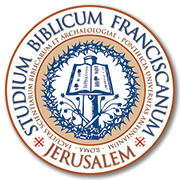Introduction to the Archaelogy in the Lands of the Bible
The principal objectives of the introductory program in archaeology on the Lands of the Bible are to provide:
(i) informed, critical examinations of core issues in archaeology connected to the Bible;
(ii) comprehensive understanding in principal methods and theories of archaeology, oriented for the better understanding of the Bible;
(iii) to put down the academic foundations for the later studies and researches related to archaeology in connection with the Lands of the Bible.
The Introductory Course will have 13 integral parts during the four weeks of the lecture-series. Each lectures will be 90 minutes.
First week:
1. What is Archaeology, History and Historical Archaeology in the 21st Century?
2. Introduction to Building Archaeology and Monument Presentations in the Biblical Lands.
3. Introduction to Cultural Anthropology of the People and the Peoples in the Bible.
For the written paper: determination of the topic.
Second week:
4. Introduction to the History of Arts and Architecture in the Lands of the Bible.
5. Egyptian Archaeology I.
6. Egyptian Archaeology II.
For the written paper: printed presentation of the detailed content with bibliography.
Third week:
7. Introduction to the Material Culture of Archaeology (Numismatics, Ceramology, Glass-studies etc.) in the Ancient Near-Eastern Studies.
8. Archaeology of Mesopotamia I.
9. Archaeology of Mesopotamia II.
For the written paper: printed presentation of the final content (minimum 5 pages).
Fourth week:
10. Syro-Palestinian Archaeology I.
11. Syro-Palestinian Archaeology II.
12. Archaeology related to the New Testament.
Fifth week:
13. Conclusion: Limits and Future of Archaeology.
For the written paper: deadline for submission before the 13th lecture.
The active participation on the Archaeological Course with an oral exam will result one credit. Meanwhile, an academic paper with an oral exam can result two credits, which has to be written (in English or in Italian) on one of the archaeological sites connected to the Bible. Students are strongly encouraged to select one of the known settlements in the Lands of the Bible, to choose a sample as an example (like Aswan, Ebla or Qumran) for its complete research history (not only the archaeological excavations), since their identifications, or from the beginning of their academic research. In addition to these selected settlements, all students are expected to acquire a basic understanding of the archaeology of complex societies and peoples in both the Old and New Testaments, as well as a general knowledge of those aspects of ethnography, comparative ethnology, and biological anthropology that have cardinal importance in the 21st century world of archaeology and cultural anthropology. For the third credit the distinguished students have to give an oral exam after completing the course.
One of the opportunities to look after the introductory-bibliography can be:
Ancient Near East: Introductory Bibliography (Charles Conroy)
Ancient Near East and Egypt (UCLA Library)
But there will be several new online and printed lexicons in 2021 with the latest, up-to-date bibliographies.


